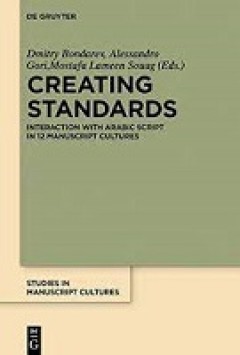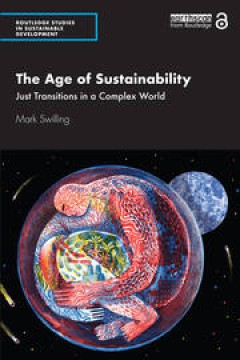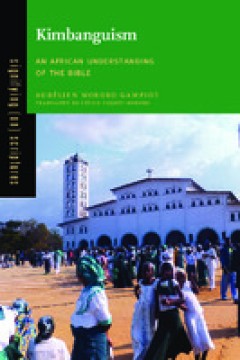Filter by

Creating Standards: Interactions with Arabic script in 12 manuscript cultures
This book deals with various aspects of standardisation by stepping outside the disciplinary and regional boundaries and providing a typological cross-cultural comparison of standardisation processes in writing traditions influenced by Arabic where different cultures, languages and scripts interact.
- Edition
- Ed. 1
- ISBN/ISSN
- 9783110635089; 9783110634983
- Collation
- 326
- Series Title
- -
- Call Number
- 400 CRE c

Invented Edens: Techno-Cities of the Twentieth Century
Tracing the design of “techno-cities” that blend the technological and the pastoral. Industrialization created cities of Dickensian squalor that were crowded, smoky, dirty, and disease-ridden. By the beginning of the twentieth century, urban visionaries were looking for ways to improve both living and working conditions in industrial cities. In Invented Edens, Robert Kargon and Arthur Mo…
- Edition
- -
- ISBN/ISSN
- 9780262276733
- Collation
- -
- Series Title
- -
- Call Number
- -

Spaces Speak, Are You Listening?: Experiencing Aural Architecture
How we experience space by listening: the concepts of aural architecture, with examples ranging from Gothic cathedrals to surround sound home theater. We experience spaces not only by seeing but also by listening. We can navigate a room in the dark, and "hear" the emptiness of a house without furniture. Our experience of music in a concert hall depends on whether we sit in the front row or u…
- Edition
- -
- ISBN/ISSN
- 9780262268714
- Collation
- -
- Series Title
- -
- Call Number
- -

Histories of the Immediate Present: Inventing Architectural Modernism
How the different narratives of four historians of architectural modernism—Emil Kaufmann, Colin Rowe, Reyner Banham, and Manfredo Tafuri—advanced specific versions of modernism. Architecture, at least since the beginning of the twentieth century, has suspended historical references in favor of universalized abstraction. In the decades after the Second World War, when architectural histor…
- Edition
- -
- ISBN/ISSN
- 9780262288163
- Collation
- -
- Series Title
- -
- Call Number
- -

Big Box Reuse
What happens to the landscape, to community, and to the population when vacated big box stores are turned into community centers, churches, schools, and libraries? America is becoming a container landscape of big boxes connected by highways. When a big box store upsizes to an even bigger box “supercenter” down the road, it leaves behind more than the vacant shell of a retail operation; i…
- Edition
- -
- ISBN/ISSN
- 9780262270267
- Collation
- -
- Series Title
- -
- Call Number
- -

Southeast Asia and the Civil Society Gaze
ABSTRACT As developing countries with recent histories of isolation and extreme poverty, followed by restoration and reform, both Cambodia and Vietnam have seen new opportunities and demands for non-state actors to engage in and manage the effects of rapid socio-economic transformation. This book examines how in both countries, civil society actors and the state manage their relationship to…
- Edition
- -
- ISBN/ISSN
- 9781315885407
- Collation
- -
- Series Title
- -
- Call Number
- -

The Age of Sustainability
ABSTRACT With transitions to more sustainable ways of living already underway, this book examines how we understand the underlying dynamics of the transitions that are unfolding. Without this understanding, we enter the future in a state of informed bewilderment. Every day we are bombarded by reports about ecosystem breakdown, social conflict, economic stagnation and a crisis of identity. T…
- Edition
- -
- ISBN/ISSN
- 9780429057823
- Collation
- -
- Series Title
- -
- Call Number
- -

Kimbanguism: An African Understanding of the Bible
From the early days of Christianity in Sub-Saharan Africa, a Eurocentric view of Christian teaching was a primary tool in the subjugation and domination of native populations. Since 1921 Kimbanguism, an African Initiated Church, has advocated a reconstruction of Blackness by appropriating the parameters of Christian identity. The prophet Simon Kimbangu, the founder of the movement, has inspired…
- Edition
- Ed. 1
- ISBN/ISSN
- 9780271079707
- Collation
- -
- Series Title
- Signifying (on) Scriptures
- Call Number
- 290 MOK k

Nurturing Dreams: Collected Essays on Architecture and the City
Unavailable as a collection until now, these essays document both the intellectual journey of one of the world's leading architects and a critical period in the evolution of architectural thought. Born in Tokyo, educated in Japan and the United States, and principal of an internationally acclaimed architectural practice, celebrated architect Fumihiko Maki brings to his writings on architectu…
- Edition
- -
- ISBN/ISSN
- 9780262278911
- Collation
- -
- Series Title
- -
- Call Number
- -

Toward the Healthy City: People, Places, and the Politics of Urban Planning
A call to reconnect the fields of urban planning and public health that offers a new decision-making framework for healthy city planning. In distressed urban neighborhoods where residential segregation concentrates poverty, liquor stores outnumber supermarkets, toxic sites are next to playgrounds, and more money is spent on prisons than schools, residents also suffer disproportionately from …
- Edition
- -
- ISBN/ISSN
- 9780262258685
- Collation
- -
- Series Title
- -
- Call Number
- -
 Computer Science, Information & General Works
Computer Science, Information & General Works  Philosophy & Psychology
Philosophy & Psychology  Religion
Religion  Social Sciences
Social Sciences  Language
Language  Pure Science
Pure Science  Applied Sciences
Applied Sciences  Art & Recreation
Art & Recreation  Literature
Literature  History & Geography
History & Geography